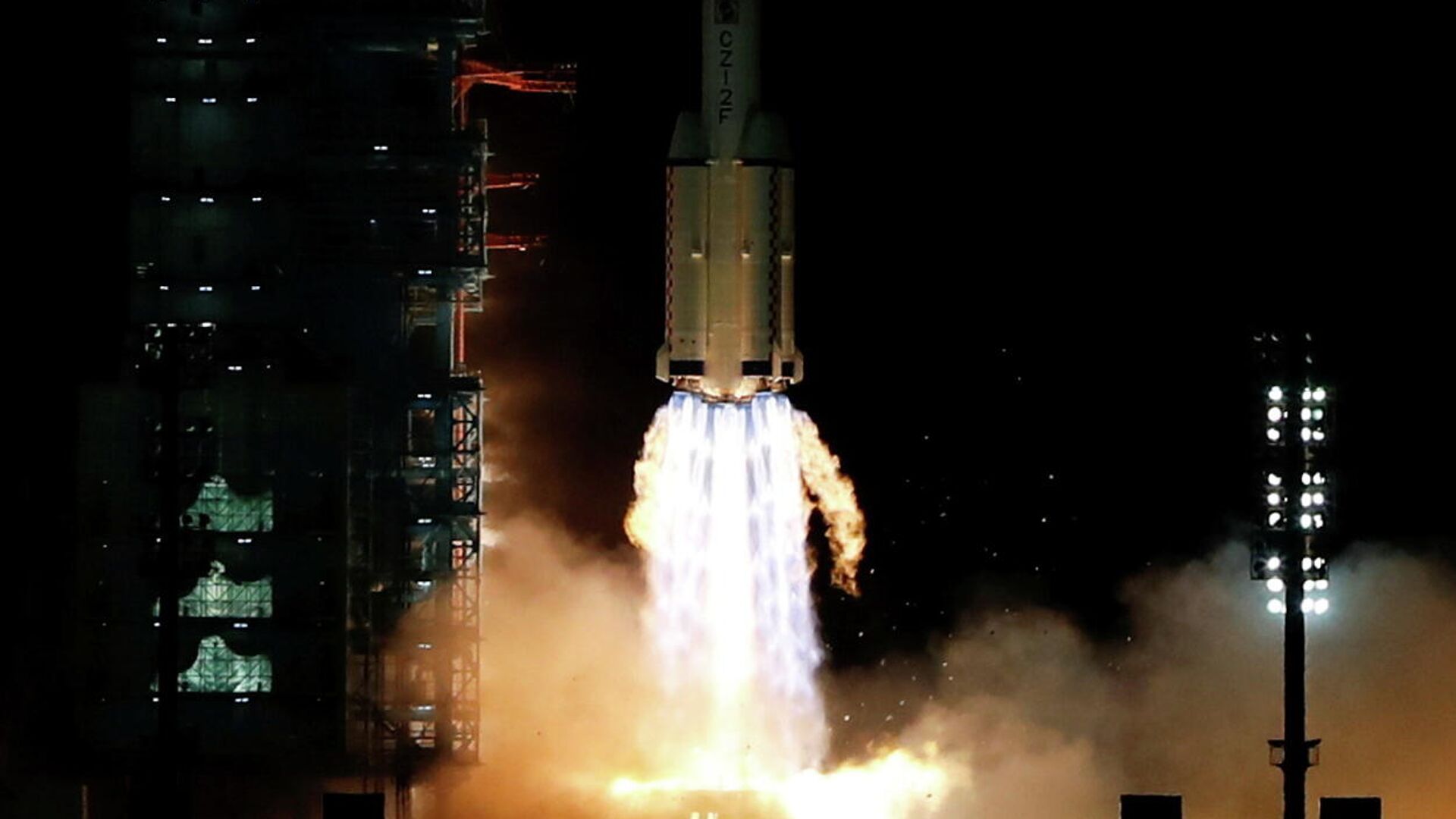Watch: Three Chinese Taikonauts Blast Off for Six-Month Stay on New Tiangong Space Station
00:53 GMT 16.10.2021 (Updated: 13:31 GMT 06.08.2022)
Subscribe
China’s eighth manned space mission blasted off a few minutes after midnight on Saturday morning from the Jiuquan Satellite Launch Center in the Gobi Desert, ferrying three taikonauts up to the new Tiangong space station for a six-month-long mission.
"Please rest assured that we will definitely succeed in this mission," mission commander Zhai Zhigang told mission officials before blastoff. He was accompanied by taikonauts Ye Guangfu and Wang Yaping, the latter of whom will be the first Chinese woman to live on the new space station, which was placed in orbit in April.
However, it won’t be Wang’s first trip to a space station: she also visited China’s prototype space lab Tiangong-1 for two weeks in 2013, onboard the Shenzhou 10 mission, according to Space.com. The website also noted that Zhai conducted China’s first-ever spacewalk in 2008 on the Shenzhou 7 mission, and that this is Ye’s first time in space.
"I feel very proud," Ye said at a presser prior to the launch. "For me personally, this is a great challenge, but I have every confidence to complete this mission successfully.”
A Long March 2F rocket lifted them off the Earth in footage published on social media.
successful launching of China's Shenzhou-13 pic.twitter.com/zjA7D7lS0r
— Amb. Zhang Lizhong (@PRC_Amb_Uganda) October 15, 2021
The late-night launch was made to coincide with Tiangong passing over the launch center, so as to minimize rocket fuel use. However, it also made their docking maneuver more difficult. The Shenzhou (Divine Vessel) 13 spacecraft successfully docked with Tiangong about seven hours later, employing the same automatic docking system used by Shenzhou 12 and Tianzhou 3.
The core module of the Tiangong (heavenly palace} space station, named Tianhe (Harmony of the Heavens), was placed in orbit in April. Decked out with numerous module ports, when fully formed by the end of next year, the space station will contain several labs, crew quarters, and a telescope. It will also be able to receive unmanned Tianzhou (Heavenly Vessel) resupply craft, which can launch from Earth and dock with the space station remotely.

A general view of the Long March-2F Y13 rocket, carrying the Shenzhou-13 spacecraft and three astronauts in China's second crewed mission to build its own space station, before its launch at Jiuquan Satellite Launch Center near Jiuquan, Gansu province, China October 15, 2021.

The Long March-2F Y13 rocket, carrying the Shenzhou-13 spacecraft and three astronauts in China's second crewed mission to build its own space station, launches at Jiuquan Satellite Launch Center near Jiuquan, Gansu province, China October 16, 2021.
After Shenzhou 13, assembling Tiangong will require two more crewed missions - Shenzhou 14 and 15 - two Tianzhou cargo craft, and two more large modules will have to be lifted into orbit, which are named Mengtian (Dreaming of the Heavens) and Wentian (Quest for the Heavens).
Tiangong will be about the size of Russia’s Mir space station, which was the largest man-made object in space before being deorbited in 2001, but still just one-fifth the mass of the International Space Station today.
The first taikonauts to visit the station paid it a three-month visit to test everything out, get things up and running, and sort out the contents of several supply craft sent ahead of them. Their mission also included spacewalks and a live television chat with Chinese President Xi Jingping before returning to Earth late last month.
Shenzhou 12 was by far the longest Chinese manned mission in space, but Shenzhou 13 is set to double that record, with Zhai, Wang and Ye zipping around the Earth for the next six months.
China Manned Space Agency spokesman Lin Xiqiang told reporters that, as per the space agency’s standard practice, the already-assembled Shenzhou 14 spacecraft will be kept at hand and a Long March 2F rocket placed on standby in case of an emergency in space.

